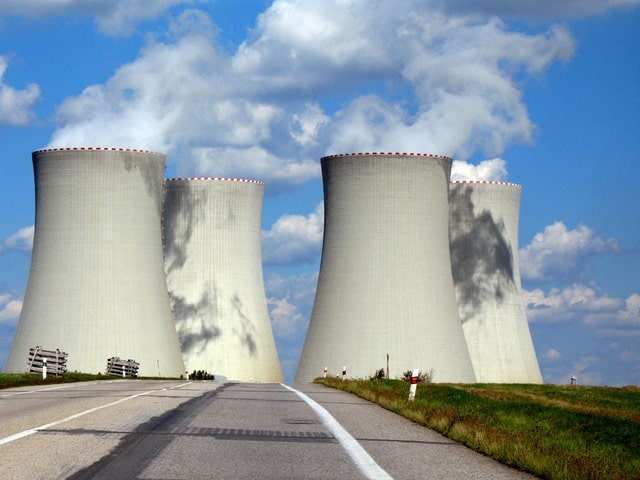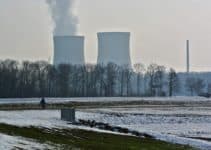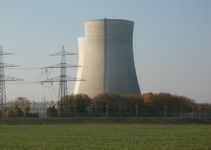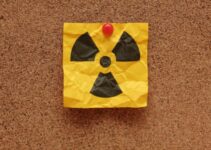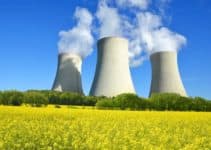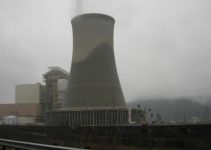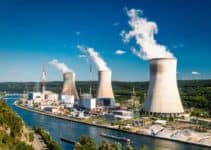Nuclear energy is the energy released by a chain reaction, specifically by the process of nuclear fission or fusion in the reactor. The source of fuel used to generate nuclear energy is mined and processed uranium (enriched uranium), which is utilized to generate steam and produce electricity.
How does a nuclear reactor produce electricity? A nuclear reactor produces electricity just the same way other power plants do. The chain reaction generates the energy. The energy turns water into steam. The steam releases pressure. The steam pressure is directed to turn a turbine that is coupled to a generator. The turning turbine triggers the generator to produce electricity.
The main difference lies in how the heat is created. Power plants powered by fossil fuels burn oil, coal or natural gas to produce heat. In a nuclear power plant, heat generation stems from splitting of atoms, a process known as nuclear fission. The process of splitting a nucleus into two is called nuclear fission. Millions of uranium nuclei occur inside every uranium fuel pellet. When splitting of these nuclei takes place, a vast quantity of energy is released. A small percentage of this energy emanates from radiation, but the biggest percentage comes from kinetic energy. This kind of energy is the one utilized to generate heat inside the reactor.
Various Disadvantages of Nuclear Energy
Although the advantages of nuclear energy and plenty including low cost, sustainable, provision of a stable base load of energy and low pollution, it has it’s a fair share of disadvantages. Here is a comprehensive view of the disadvantages of nuclear energy:
- Nuclear radiation accidents
The radioactive waste coming from nuclear power plants is a great threat to Mother Nature and humans. The devastating effects of Chernobyl disaster still linger in our minds, where the grave effects on humans can be seen even today. According to records, about 30, 000 people died in the Chernobyl disaster, and over 2.5 million Ukrainians are still dealing with the health tribulations associated with the nuclear waste.
Only a few years back, a huge nuclear crisis occurred in Japan on March 8. Although the casualty rate was significantly lower than the Chernobyl disaster, the environmental impacts were disastrous. People who work at nuclear power plants and live near those areas are at high risk of facing nuclear radiations, if it happens. According to these historical happenings, it’s evident that we cannot insulate ourselves 100% from these disasters.
- Radioactive waste
Radioactive waste is any material, whether solid, liquid or gas that consists of a radioactive nuclear substance and the operators of the nuclear plant have determined that it’s a waste. Radioactive material is considered waste after it has spent more than 3 years in the reactor producing heat and electricity. This waste comes from nuclear reactors and needs to be disposed of or stored safely and conveniently considering they are highly dangerous and can let off radiations if disposed of incorrectly.
The reason it has to be disposed of safely and appropriately is that it is able to emit radiations even after thousands of years. The storage or disposal of radioactive waste is the main reason slowing down expansion of nuclear energy. Handling and safe storage can happen as long as it’s cooled and workers insulated from the radiation it emits by thick material such as steel, concrete or a few meters of water.
Water is able to offer remarkable cooling and shielding, which means a typical reactor can have its fuel removed under water and safely transferred into a storage pool. After more than 5 years, the waste can be transferred into dry ventilated concrete containers. However, the radioactive waste can stay safely in the pool for over 50 years.
- Requires high initial capital costs
Another practical disadvantage of using nuclear energy is that it needs a lot of investment to set up a nuclear power station. Constructing a nuclear power plant requires massive capital outlay. For example, between the year 2002 to 2008, the cost of constructing a new power plant increased from between $2 billion to $4 billion per unit to a staggering $9 billion per unit. The new constructions occurring in Europe today are estimated to surpass the $10 billion mark each, not to mention it takes 5-10 years to be fully operational, plus construction requires completion of a multitude of legal formalities.
- Eutrophication leading to death of aquatic life
Eutrophication is extensive enrichment of the lake and other water bodies by nutrients, mostly due to runoff from land. This process causes dense growth of plant life eventually leading to death of aquatic life as a result of lack of oxygen. Radioactive waste can cause this problem. Many seminars take place across the world to find a solid solution to this potential problem, but a solution is not yet in sight. According to scientists, radioactive wastes take about 10, 000 years to neutralize.
- Impact on humans
The impacts of the Hiroshima and Nagasaki nuclear bombs during the Second World War are still rife in our memories. Today, the effects of these bombs are still occurring. Children in Japan are being born with defects. This makes a nuclear power plant more dangerous, especially in this day and age of high threat of terrorism. Terrorists can take advantage and deliberately cause nuclear meltdown. This is why stringent safeguards including permission to construct a nuclear power plant and maximum security are put in place to mitigate this potential catastrophe from happening.
- It’s not a renewable energy source
The raw material for generation of nuclear energy is uranium. Uranium is mined, which means it’s not available in many countries. It’s also a scarce resource. Most countries export this mineral for nuclear energy production. Once uranium is completely extracted, there will be no nuclear energy production. Because of its dangerous effects and limited in supply, it doesn’t qualify as a renewable resource.
- National Risk
Nuclear energy has given us the power to produce more weapons than to produce things that can make the world a better place to live in. We have to become more careful and responsible while using nuclear energy to avoid any sort of major accidents. They are hot targets for militants and terrorist organizations. Security is a major concern here. A little lax in security can prove to be lethal and brutal for humans and even for this planet.
- Fuel Availability
Unlike fossil fuels which are available to most of the countries, uranium is very scarce resource and exist in only few of the countries. Permissions of several international authorities are required before someone can even thought of building a nuclear power plant.
We all need an energy supply that is reliable, but it also has to be safe. Across the world, numerous questions are asked each day about nuclear energy. Some countries are looking to scale down on its development, while others to entirely abandon it. However, there are vital lessons to be learned about nuclear energy from the events at Fukushima.
To mitigate further disasters, a body called The World Association of Nuclear Operators (WANO) was set up that is geared towards safe and reliable operation of nuclear power plants by conducting independent peer reviews for every new nuclear power plant operating across the world. If nuclear power plants are managed effectively and waste disposed of appropriately, nuclear energy can provide the most reliable, stable and clean source of energy to the world population.
